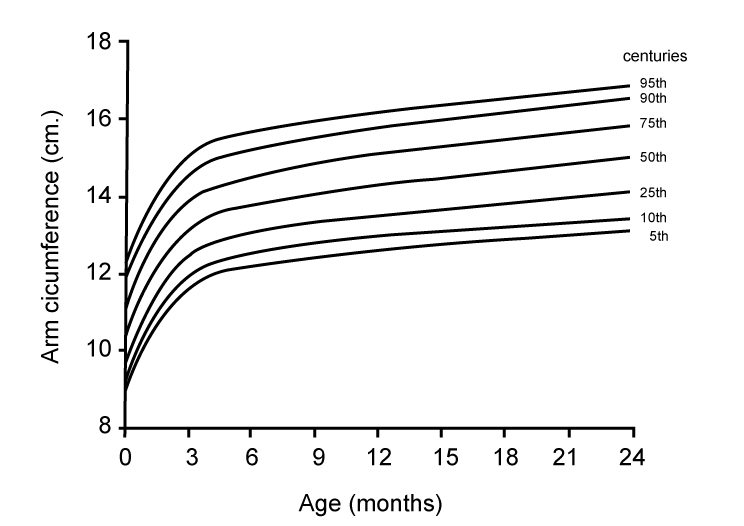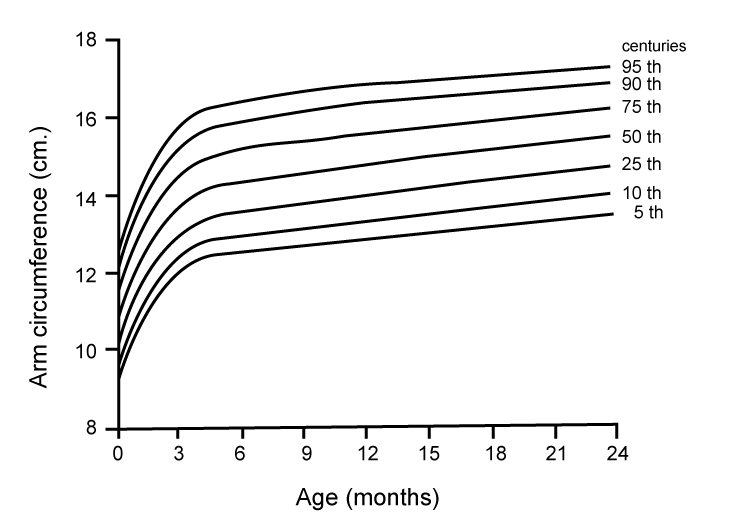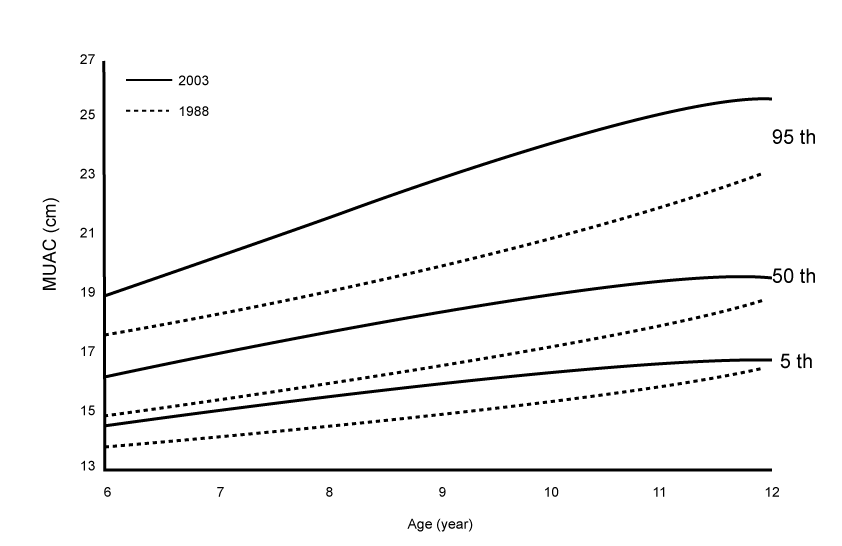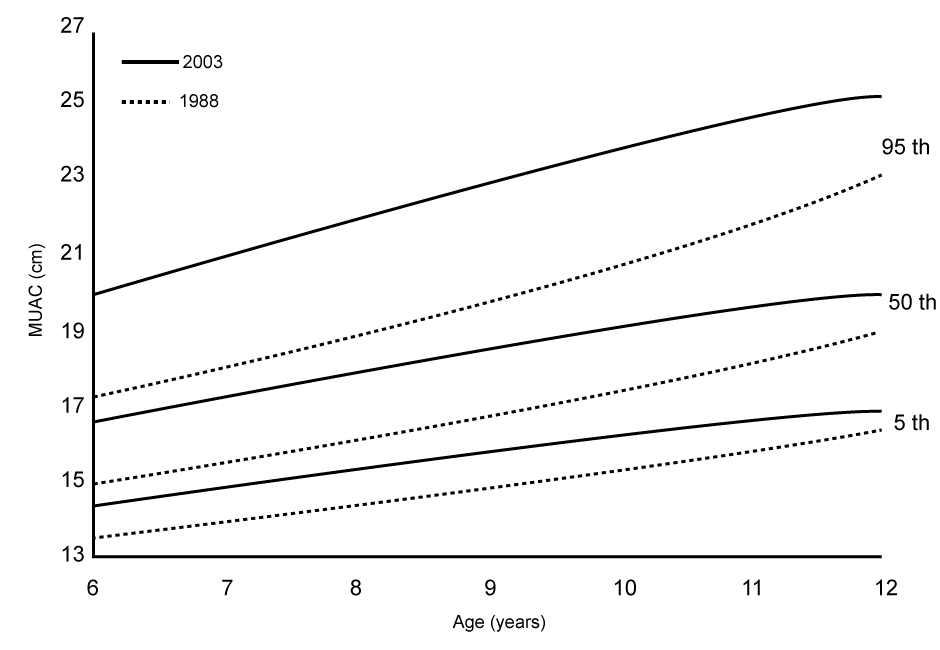Make the best use of Scientific Research and information from our 700+ peer reviewed, Open Access Journals that operates with the help of 50,000+ Editorial Board Members and esteemed reviewers and 1000+ Scientific associations in Medical, Clinical, Pharmaceutical, Engineering, Technology and Management Fields.
Meet Inspiring Speakers and Experts at our 3000+ Global Conferenceseries Events with over 600+ Conferences, 1200+ Symposiums and 1200+ Workshops on Medical, Pharma, Engineering, Science, Technology and Business
Review Article Open Access
A Systematic Review of Reference Values for Mid Upper Arm Circumference (MUAC) in Southern Iran
| SMT Ayatollahi* | |
| Department of Biostatistics, The Medical School, Shiraz University of Medical Sciences, Iran | |
| Corresponding Author : | Dr. SMT Ayatollahi PhD, Professor of Biostatistics The Medical School, Shiraz University of Medical Sciences Shiraz, Islamic Republic of Iran P.O. Box 71345-1874 Tel: 0098711-2349330 Fax: 0098711-2349330 E-mail: ayatolahim@sums.ac.ir |
| Received December 14, 2011; Accepted March 19, 2012; Published March 26, 2012 | |
| Citation: Ayatollahi SMT (2012) A Systematic Review of Reference Values for Mid Upper Arm Circumference (MUAC) in Southern Iran. J Obes Weig los Ther 2:119. doi:10.4172/2165-7904.1000119 | |
| Copyright: © 2012 Ayatollahi SMT, et al. This is an open-access article distributed under the terms of the Creative Commons Attribution License, which permits unrestricted use, distribution, and reproduction in any medium, provided the original author and source are credited. | |
Visit for more related articles at Journal of Obesity & Weight Loss Therapy
| Keywords |
| Mid Upper Arm Circumference; Obesity; Centile; Iran |
| Introduction |
| Measuring MUAC has several advantages. The measuring can be taken quickly and at little cost. It requires neither sophisticated equipment nor anything but the most basic literary level to carry out [1,2]. It is an excellent indictor of nutritional status and is frequently used for screening purposes [3-6]. |
| A reference for MUAC was provided in the Netherlands [7]. Standards for arm circumference of Tanzanian children were also reported [8]. |
| The earliest report on MUAC measurement in Iran dates back to 1978. Weight, height and arm circumference of 400 Esfahan (one of the five principal cities in Iran) children aged 1-24 months attending the city Public Health Center, were measured. Comparing the 80% weight for age as an upper limit for protein- calorie malnutrition (PCM) with the arm for age and age constant arm standard, in the children aged 13- 24 months classified as malnourished groups was found to be similar to the total number in the first, second and third degree malnutrition groups by weight. Thus, arm circumference measurement could be used for detection of malnutrition in crisis situations. The values of correlation coefficient (r) between MUAC for and weight, height, head and chest circumference for age is better with weight than other parameters [9]. Foroozani and her colleagues [10] have also compared their arm circumference data with Wolanskis standard and found that their measurements were lower than the standard. |
| MUAC of less than 6 months of infants in a community field of Zanjan [11] (North West Iran) were reported. Also 2000 healthy women (age range: 15-49 years) in Mashad (one of the five principal cities in the North East of Iran) were studied to assess anthropometric measurements at reproductive age and the usefulness of MUAC for estimating Body Mass Index (BMI) and screening of women at nutritional risk. The study found a strong correlation between MUAC with weight and BMI, suggesting that MUAC can be used to estimate BMI and detect nutritional disorders [4]. |
| Materials and Methods |
| Data from 700 mothers (aged 18-30) and babies from delivery wards of 12 university hospitals in Tehran (The Iran’s Capital) for duration of six months reported and arm circumference of less than 23cm was considered as cut-off point for delivery of low-birth weight. The paper concludes that mothers who are at high risk for delivering low-birth babies can be screened by measuring arm circumference at anytime during pregnancy [12]. |
| Reference values for MUAC in Shiraz |
| None of these studies provided reference values for MUAC of Iranians. They were not aimed at a specific target population and could not be classified as survey researches on the subject of MUAC. The groups studied were taken from clinics and hospitals etc. This motivated us to carry out several studies on MUAC data and provide reference values for different age groups. Therefore the present paper gives a state of art of MUAC reference data for Shiraz (Iran). |
| Place of study |
| Shiraz, one of the 5 principal cities of the Islamic Republic of Iran, is the center of Fars province. The city is located 1000km south of the capital (Tehran) and 100km north of the Persian Gulf, at an altitude of 1500m above sea level. It had a Mediterranean climate and a population of 1.2 million, of whom 84% were literate (Iran Literacy Movement, unpublished report, 1998).The city is both the most developed city in the Southern region and the cultural capital of Iran. |
| Mid Upper Arm Circumference (MUAC) |
| The mid upper arm landmark was taken as the point on the lateral border of the acromion and the olecranon when the arm was flexed at 90 degrees. This may be easily determined by marking the lateral border of the acromion and applying a tape measure to this point. The plastic tape was allowed to lie over the surface of the arm, and MUAC was recorded to the nearest mm [13]. |
| Age of subjects |
| Subjects’ ages were calculated exactly as the difference between the date of interview and date of birth in days as recorded in their birth certificate, which is accurate. |
| Construction of MUAC reference charts |
| The charts were constructed using an amalgamated method (AM) for age–related centiles [14] This method amalgamates the Lambda- Median- Standard Deviation (LMS) parametric method [15] and its extension [16] and Healy–Rasbash–Yang (HRY) [17] nonparametric method as extended to model a wide range of ages [18] by applying techniques used in one or the other. The method first applies a Box-Cox power transformation [19] of the form of |
 |
| to normalize the data, where yi’s are the MUAC measurements and λ is the power of the transformation applied. The AM method increases the ease and width of the cited methods and provides more realistic charts close to the data using a 4 step algorithm AMSTAT software specially written to handle the AM method was used to smooth the anthropometric data. Goodness of fit of data was evaluated both by z-score method and counting the number of observation between the centiles if the centiles are a good fit to data, approximately the correct number of points should lie between consecutive centiles, not only overall but also within sub ranges of age. An amalgamated method (AM) was used to estimate age-related MUAC smoothed centiles [16]. Goodness-of-fit was assessed both graphically and numerically. This method has been implemented in GROSTAT software [20]. |
| Neonates MUAC reference data |
| The data relate to a representative sample (a 4 per cent random sample) of 507 healthy neonates (244 boys, 263 girls) born in Shiraz in 1996 [21]. MUAC measurements were carried out by five trained auxologists within 24h out of delivery and were taken with the newborn lying down naked. |
| Table 1 presents summary statistics of MUAC at birth of the neonates. Boys MUAC at birth was significantly greater than girls (P<0.01). |
| Infants |
| A cohort of 317 neonates (164 girls and 153 boys) were selected randomly using probability proportional to size scheme among those born at the 14 maternity clinics of Shiraz during 2 random consecutive weeks from 7th of June to 20th of June in 1996. The selected subjects were healthy singleton neonates whose mothers conceived them in Shiraz and their parents did not intend to migrate else-where during the study period. They were followed and visited at homes for 24 months measured by the trained auxologists [22,23]. |
| Table 2 gives summary statistics of the MUAC measurements by age of infants. The measurement increases with age more rapidly in the first year, but their rates of increase in the second year of life is much lower [24,25] girls MUAC means are less than boys. Figure 1 and Figure 2 provides MUAC charts for age for boys and girls respectively. |
| Children MUAC Reference Data |
| Two studies had been carried out on MUAC of school children in Shiraz (Iran), one in 1988-89 [26] and the other in 2002-2003 academic years [27]. The first one related to 1207 subjects (642 boys and 565 girls), aged 6-12 years. The second survey was more sophisticated but followed the same logic of sampling to provide reference charts of MUAC by age and compared the results and examined the developments happened during a some 15years period. |
| A sample of 2283 healthy children aged 6-12 years selected had been free of any sort of congenital malformation, malnutrition or history of illnesses, using clinical interview questionnaires and seeking consultation of a pediatrician. The community came from of the same ethnic group. The MUAC was measured by two trained auxologists. Measurements had been compared and validated properly Valid measurements were available for 1145 boys (98.2%) and 1062 girls (98.9%).Collected data had been used for the study purposes only. |
| Table 3 presents summary statistics of MUAC measurements by age and sex and their respective significant differences reported. MUAC increases by age and is significantly higher in girls than boys (p=.0014). |
| A comparison of MUAC centiles of boys and girls is shown in Figure 3. As can be seen, boy’s charts generally lie below that of girls. |
| Figure 4 compares extreme as well as median centiles of our subjects with that of girls from the previous growth survey of Shiraz primary school children carried out in 1988, respectively [26]. |
| The figure shows that our subjects had now longer MUAC than their peers born almost 15 years earlier. On the average in a 15 year period (1988-2003) boys and girls MUAC increased by 1.4 cm (p=0.07) and 1.6 cm (p=0.045) respectively [26,27], which may be attributed to the developments happened in the post war Iran from 6 to 12 years for 6 months increased. |
| Adults MUAC Reference Data |
| The data related to a random sample of 2282 married adults (1141 pairs) aged 25-55 years mean ± SD ages of husband and wives were 39.9 ±5.7 and 34.1± 5.7 years respectively. They were selected by a multistage sampling scheme and forming a 2% sample of the primary school parents from the four educational districts of Shiraz (Southern Iran), in academic year 2002-2003 [28]. Table 4 presents summary statistics of MUAC by sex and age of married adults of Shiraz. Females MUAC were significantly thicker than male (P<0.01). However, female MUAC were generally greater than males. |
| Conclusions |
| Nevertheless, for producing data a validation of measurements would have been advisable. The MUAC of one country may differ from that of another. Our charts would be satisfactory for use as standard MUAC charts in Iran south as the samples represented the general structure of these people. However, it is suggested that MUAC standards be re-evaluated and updated periodically, perhaps every other decade due to developments occurring in Iran. Our present results support this suggestion and favor the local standard for MUAC charts which our studies provide for both sexes of infants, schoolaged children, and adults. Adolescents MUAC data are lacking in our studies, which is proposed. |
| The present investigations were undertaken in order to provide MUAC reference data that could be used in future clinical and community health studies in south Iranians, which comprises various socio-economic backgrounds and environmental conditions into account. |
| However, a comparison between our data with international references had provided evidence for the need of local standards which was unavailable. Until then, our reference values could serve this purpose for urban areas of Iran Lastly, MUAC proved to be a simple reliable tool to assess obesity with minimal training. |
References
- Rodrigues VC, Rao RS, Lena A (1994) Utility of arm circumference as a screening instrument to identify women at nutritional risk. Trop Doct 24: 164-166.
- Delgado HL, Valverde V, Klein RE (1983) Critical analysis of the validity of arm circumference as an indicator of protein-energy nutritional status in preschool children. Arch Latinoam Nutr 33: 170-188.
- Hop LT, Gross R, Sastroamidjojo S, Giay Tu, Schultink W (1998) Mid-upper-arm circumference development and its validity in assessment of undernutrition. Asia Pacific J Clin Nutr 7: 65-69.
- Khadivzadeh T (2002) Mid upper arm and calf circumferences as indicators of nutritional status in women of reproductive age. East Mediterr Health J 8: 612-618.
- Sood SL, Saiprasad GS, Wilson CG (2002) Mid arm circumference at birth. A screening method for detection of low birth weight. Indian Pediatr 39: 838-842.
- Trowbridge FL, Staehling N (1980) Sensivity and specificity of arm circumference indicators in identifying malnourished children. Am J Clin Nutr 33: 687-696.
- Voorhoeve HW (1990) A new reference for the mid-upper-arm circumference. J Trop pediatr 36: 256-262.
- Davies CT, Mbelwa D (1974) Height, Weight, lean body mass and arm circumference standards for Tanzanian children age 7-16 years. East Afr Med J 51: 382-387.
- Froozani MD (1978) Weight, height and arm circumference of a group of low income Esfahan children. Tropical Pediatrics and Environmental Child Health 24: 117-119.
- Froozani MD, Malekafzali H, Bahrini B (1980) Growth of a group of low income infants in the first year of a life. J Trop Pediatr 26: 96-98.
- Koosha A (1999) A survey on weight, height and arm circumference of less than six months old infants in a community medicine field of Zanjan (1995). Journal of Tabriz University of Medical Sciences 33: 57-62.
- Parsay S (2005) Can we predict risk of having a low birth weight baby by measuring mothers height and arm circumference? Abstract 117907, American Public Health Association, 133rd Annual Meeting and Exposition, Philadelphia, PA, USA.
- Cameron N (1984) The Measurement of Human Growth. Routledge Kegan & Paul.
- Ayatollahi SMT (1996) An amalgamated method for estimating age-related centiles. J Sci I R Iran 7: 48-56.
- Cole TJ (1988) Fitting Smoothed Centile Curves to reference data. J R Statist Soc A 151: 385-418.
- Cole TJ, Green PJ (1992) Smoothing reference Centile Curves the LMS method and Penalized likelihood. Stat Med 11: 1305-1319.
- Healy MJ, Rasbash J, Yang M (1988) Distribution-free estimation of age-ralated centiles. Ann Hum Biol 15: 17-22.
- Pan HQ, Goldstein H, Yang Q (1990) Non-Parametric estimation of age-related centiles. Ann Hum Biol 17: 475-481.
- Box GEP, Cox DR (1964) An analysis of transformations. J R Statist Soc B 26: 211-252.
- GROSTAT (1988) A Program for Estimating Age Related Distribution Centiles. London School of Hygiene and Tropical Medicine.
- Ayatollahi SMT, Shahsavary S (2002) Sizes at birth in Shiraz, Iran. J Trop Pediatr 48: 245-247.
- Ayatollahi SMT (2001) Reference charts for arm, chest and head circumferences of South Iranian infants. Med J Islam Repub Iran 4: 321-327.
- Ayatollahi SMT (2001) Reference charts for arm, chest and head circumferences of South Iranian infants. J Trop Pediatr 47: 376-378.
- Ayatollahi SMT, Khademi A (2002) Logitudinal reference standard for growth velocity of infants in Shiraz, Iran. Med J Iran Hosp 4: 34-41.
- Ayatollahi SMT (2005) Growth velocity standards from longitudinally measured infants of age 0-2 years born in Shiraz southern Iran. Am J Hum Biol 17: 302-309.
- Ayatollahi SMT, Carpenter RG (1990) Growth modeling of school children in Iran using Shiraz data. Med J Islam Repub Iran 4: 267-272.
- Ayatollahi SMT, Shayan Z (2008) New reference Valus for mid upper arm Circumference of Shiraz (Iran) primary school Children. E Spen Eur E J Clin Nutr Metab 3: e72-e77.
- Ayatollahi SMT, Ghoreshizadeh Z (2006) Standards and Structural Models for Circumferences Anthrop Pometric Measurements and Body Mass Index and an examination of bio- Social Factors in Shiraz (Iran) Families Shiraz. Shiraz University of Medical Sciences [Ahead of Print].
Tables and Figures at a glance
| Table 1 | Table 2 | Table 3 | Table 4 |
Figures at a glance
 |
 |
 |
 |
| Figure 1 | Figure 2 | Figure 3 | Figure 4 |
Post your comment
Relevant Topics
- Android Obesity
- Anti Obesity Medication
- Bariatric Surgery
- Best Ways to Lose Weight
- Body Mass Index (BMI)
- Child Obesity Statistics
- Comorbidities of Obesity
- Diabetes and Obesity
- Diabetic Diet
- Diet
- Etiology of Obesity
- Exogenous Obesity
- Fat Burning Foods
- Gastric By-pass Surgery
- Genetics of Obesity
- Global Obesity Statistics
- Gynoid Obesity
- Junk Food and Childhood Obesity
- Obesity
- Obesity and Cancer
- Obesity and Nutrition
- Obesity and Sleep Apnea
- Obesity Complications
- Obesity in Pregnancy
- Obesity in United States
- Visceral Obesity
- Weight Loss
- Weight Loss Clinics
- Weight Loss Supplements
- Weight Management Programs
Recommended Journals
Article Tools
Article Usage
- Total views: 18163
- [From(publication date):
March-2012 - Apr 04, 2025] - Breakdown by view type
- HTML page views : 13414
- PDF downloads : 4749
